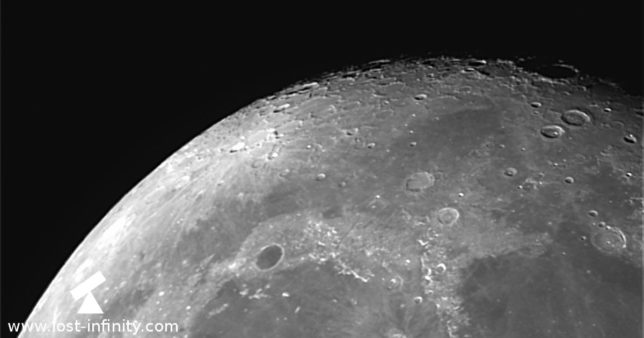Moon through 8″ GSO f/5 (f=1000mm) with QHY5-II-M camera (without and with 2x barlow lens). Camera chip pixel size 3.75um x 3.75um, resolution 1280×960. I captured another video of Jupiter with the QHY5-II-M camera here.
Clear skies!
Last updated: June 20, 2022 at 8:43 am





























Hello,
I’m interested in your feed back and planetary video captures with QHY5-II-m camera.
I understand you have the monochrome version of the QHY 5-II.
I’m new to astrophotography and I’ve just ordered the colour camera QHY 5L II C. I use a Skywatcher 130/900 mm Newton telescope with RA axis motor driven EQ2 mount and would like to perform planetary photography.
How do you calculate the magnification using this camera with your 200/1000 mm Newton telescope ?
I guess you insert the camera into the focuser (eyepiece holder) or you use a Barlow x2 lens between camera and focuser to double magnification.
Do you have any problem with focusing ( focuser travel too short) when Barlow lens is added to the camera ?
Which software do you use to capture your images, to perform video or images stacking and to improve final result ?
Congrats for your Jupiter images and Moon footage.
Thanks
Fred
Hi Fred, thank you for your kind message. First of all, sorry for my delayed answer. I am happy to hear you like the photos 🙂 Probably you have already found answers to your questions but still here are my 5 cents:
Regarding the QHY5-II-m I can give a relatively positive feedback. I mainly use it from Linux in combination with PHDGuiding (link). Some years ago I also used it with an old notebook with USB2 hardware ports and Windows XP to capture planetary images and videos. For recording the frames I used FireCapture. That worked quite well (I think those are the photos from my website).
The QHY5-II-m camera works on my GSO 200/1000mm telescope without and with a 2x Barlow lens. As you said, I just plug it into the eyepiece holder (or the Barlow lens). My telescope has enough backfocus to be used with a Barlow lens and a camera. I just have to use a spacer ring in that case. I am quite sure you can find out on the Internet if the backfocus of your telescope is sufficient as well.
My current notebook has USB3 ports. When I tried to use the camera with Windows 10 and USB3 ports I remember it didn’t work 100% stable. But maybe they fixed that problem in the meantime since my test was already some years ago. I just saw on their website that they meanwhile also offer QHY5 USB3 cameras. If I would want to buy one now, I think I would try one of those because of my experiences with USB connection problems.
Your question regarding the calculation of the magnification indeed is a good one… I don’t remember exactly what I did there but I think it is nonsense 🙂 Instead of a magnification the only thing which makes sense is to calculate an “image scale” – a value which indicates how many arc seconds of the sky are mapped to one pixel. The higher the overall focal length, the lower is the amount of arc seconds which is mapped to one pixel and the higher is your resolution so to speak. The overall real “magnification” in the end depends on the way you display the image – e.g. a printer, a monitor or whatever.
I remember when I started with astrophotography I found it was counter intuitive to not having a “magnification”. Maybe I should write a small article about that topic…. 🙂
Hope that answers some of your questions – if not please let me know!
Best regards
Carsten